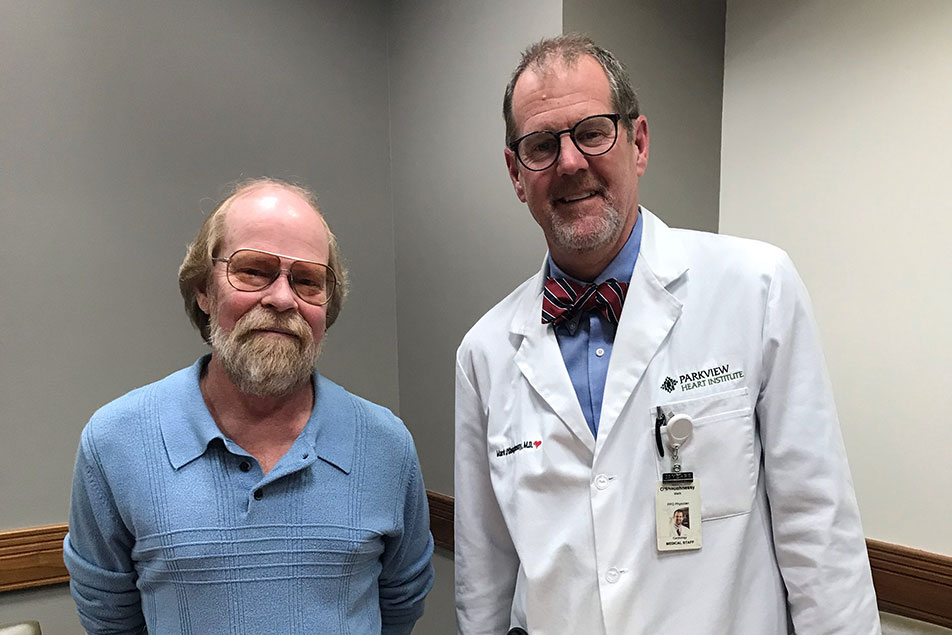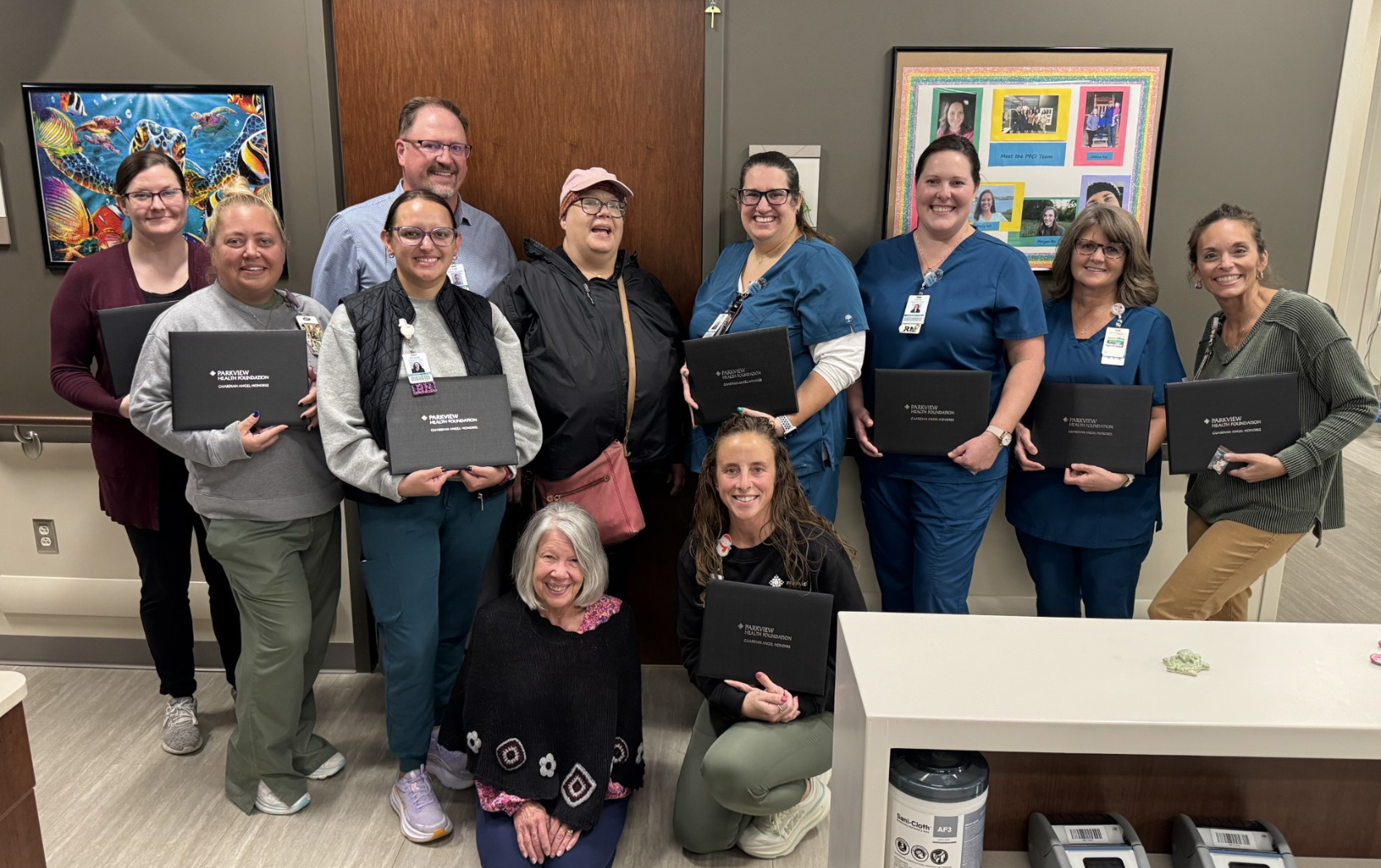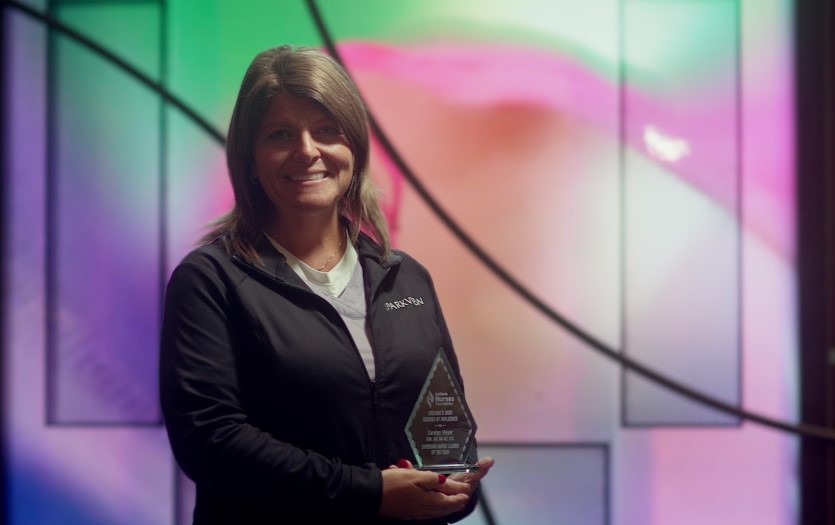
On November 1, 2019, while getting ready for bed, Thomas Same, 57, found himself unable to catch his breath. Thomas cares for his 93-year-old mother, helping with daily chores and grocery trips. He became concerned and wanted to ensure he could still assist her, so he went to Parkview Hospital Randallia.
Originally, Thomas was given a bilevel positive airway pressure machine (BiPap or BPap). The BPap machine is a type of ventilator and a device that helps with breathing. However, his physicians felt that his condition put him at risk for developing a life-threatening rapid heart rhythm and they should take greater precautions.
After a couple of days at Randallia, he was transported to the Parkview Heart Institute (PHI) and diagnosed with non-ischemic cardiomyopathy. Upon this discovery, Thomas was prescribed a Zoll LifeVest®. The LifeVest is a wearable cardioverter defibrillator (WCD) used to protect from sudden cardiac arrest (SCA) and sudden cardiac death (SCD). Unlike a heart attack, these severe cardiac events often have no warning signs. Although most patients in a LifeVest are considered high-risk for SCD, Thomas was diagnosed as a low-risk patient.
While some defibrillator devices are implanted internally, the LifeVest is worn directly against the patient’s skin, under their clothes, and provides a constant safeguard against SCD. The vest is battery operated with one battery powering the vest while the other is always charging.
Thomas was instructed to wear the LifeVest for 23 hours each day for approximately three months. The LifeVest itself is lightweight, weighing less than two pounds and equipped with EKG sensors so that the unit can detect an irregular heart rate or arrhythmia. If an event occurs, the unit will issue a warning siren before administering a shock, alerting anyone nearby not to touch the person wearing the vest.
Medications for heart-related issues can often take up to three months to take effect. This is why the LifeVest is so crucial. It can provide a physician with vital information, indicating if the medication is working, while providing an extra layer of protection for the patient. The LifeVest also helps determine if a permanent implant defibrillator is needed.
“Patients have different indications for why they qualify for a LifeVest,” Emily Keltner, program coordinator, Cardiac Rehab, Parkview Heart Institute, explained. “The purpose of the LifeVest is to give the patient’s heart time to heal and their medications time to work. We wait to see if their heart improves and if, after testing, we see improvement then they do not need a defibrillator. However, if their condition does not improve, it means they need an internal defibrillator. The vest is a temporary precaution to protect them while we wait.”
With a strong foundation, anything is possible
In times of need, patients like Thomas should not have to worry about having accessibility to life-saving technology because of cost. With the endorsement of Mark O’Shaughnessy, MD, PPG – Cardiology, the Parkview Foundation donors were ready to assist. As a not-for-profit, the Foundation strives to live out its mission, providing gifts of healing and comfort. Through the generosity of Parkview Foundation donors, Thomas was able to receive the financial support he needed for a Zoll LifeVest. Little did anyone know, just two weeks after being fitted for the vest, it would be a deciding factor in a life-or-death scenario.
Life-saving apparel
It was Thomas’s first day back to work at the Allen County War Memorial Coliseum since he had experienced shortness of breath and received his vest. On November 19, 2019, Thomas was doing a relatively light day of inventory when suddenly, he was overtaken by a wave of dizziness. The muffled noises and tunnel vision came on quickly. He tried to reach out to grab a wall, a door, anything. That was the last thing Thomas remembers before passing out.
“I didn’t feel a thing. My supervisor had caught me and when I came to, I was glad to see that my co-worker, who is also a volunteer firefighter, was standing over me. He assured me the ambulance was on their way and that I was OK,” Thomas recalled. “The ambulance was there in about three minutes, and after they removed the vest, I was taken to Parkview Heart Institute.”
Working cohesively with Parkview, Kyle Boley, cardiology territory manager, Zoll LifeVest, was notified of what happened. He was there to meet Thomas at Parkview’s Emergency Department to offer support and gain a better understanding of what transpired and how the vest functioned.
Thomas spent a few days recovering after having an implantable cardioverter defibrillator (ICD) inserted. Without the Zoll LifeVest, Thomas likely wouldn’t have been given the opportunity to receive this treatment.
“Thankfully, I haven’t had a use for the ICD yet, but paired with medication and my regular doctor’s appointments, my doctors say I’ll be fine,” Thomas shared, while still recovering from his ICD surgery. “I am so thankful for the vest. It was a little intimidating at first, but it was not restrictive. I just thank God I had it.”
Thomas remembered a very impactful comment a caregiver made during his recovery. “Without the vest, you wouldn’t be here today,” a nurse told him. “That really ‘hit home’. You don’t know until you experience it firsthand, but without Zoll and these donors, I wouldn’t be here. Thank you. I’m grateful and thankful to be here,” he said.
Thanks to donor generosity, the Foundation has been able to fund at least a dozen Zoll LifeVests in 2019 alone, helping PHI patients like Thomas. For more information about the Parkview Foundation or how you can help ‘protect hearts,’ visit ParkviewFoundations.org.



